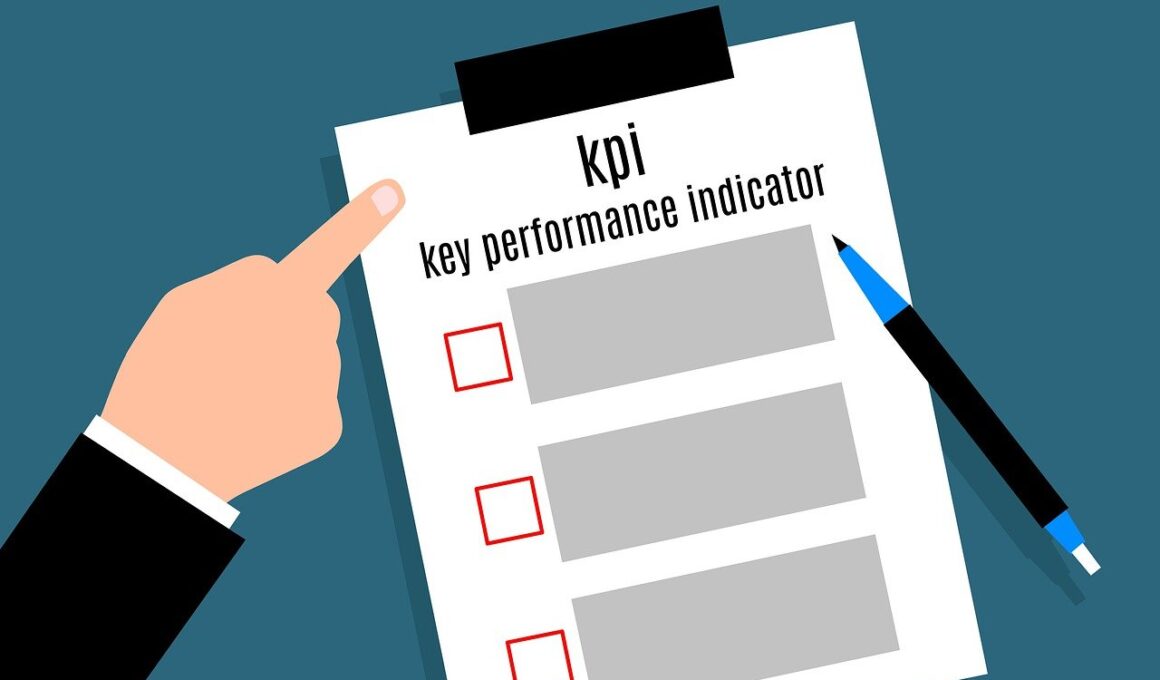Evaluating the Effectiveness of Organic Growth Strategies
In today’s rapidly changing business landscape, evaluating organic growth strategies is key to success. Companies must focus on developing sustainable methods rather than solely relying on paid advertising. This approach nurtures brand loyalty, improves user engagement, and enhances customer experiences through organically driven initiatives. Metrics like website traffic, social media engagement, and customer feedback are vital in assessing these strategies. Companies can analyze these metrics through various tools and methodologies, ranging from Google Analytics to social media monitoring software. Brands also benefit from segmenting their audiences for a clearer understanding of how well their organic growth efforts resonate with different demographics. Additionally, the effectiveness of content marketing cannot be understated; blogs, podcasts, and videos serve as mediums to showcase expertise, connect with target audiences, and foster trust. The combination of quality content and SEO-friendly practices contributes significantly to improved search engine rankings. Ultimately, continuous evaluation allows businesses to make necessary adjustments to optimize their organic growth pathways and refine strategies to meet evolving market demands.
To effectively measure the impact of organic growth strategies, businesses must first establish clear goals. These objectives should be specific, measurable, achievable, relevant, and time-bound, often referred to as SMART goals. Companies can track organic growth through various key performance indicators (KPIs), including website traffic, conversion rates, and customer retention rates. Organic search traffic serves as one of the most significant indicators of how well a website is performing. Tools such as SEMrush and Ahrefs can provide insights into keyword rankings, backlinks, and overall visibility in search engines. Moreover, understanding user behavior on websites through heatmaps and session recordings gives businesses information on how visitors interact with their online presence. These insights can help refine content strategies to better align with user interests and needs. Additionally, social media metrics like shares, likes, and comments can gauge brand visibility and engagement. Utilizing multiple channels for organic growth—blogs, social media, email newsletters—creates a complex web that can enhance visibility and brand recognition, ultimately stabilizing growth and increasing revenue over time.
Integrating Customer Feedback into Growth Strategies
Another critical aspect of measuring organic growth effectiveness is customer feedback. Gathering insights directly from customers can help organizations identify areas of strength and opportunities for improvement. Surveys, reviews, and direct customer communication provide invaluable information that can influence content strategies and overall messaging. By analyzing customer sentiment, businesses can better tailor their marketing efforts to speak directly to their target audience’s needs and preferences. Utilizing platforms like SurveyMonkey or Google Forms makes it easier for companies to gather data efficiently. Enhancing user experiences based on real feedback can drive loyalty and encourage positive word-of-mouth referrals. Furthermore, a strong presence on review sites such as Yelp or Trustpilot can serve as social proof, boosting credibility and allowing new customers to trust the brand. By implementing changes and continuously seeking feedback, businesses can adjust their organic growth strategies in real-time. This responsiveness fosters customer loyalty and enhances brand reputation, creating a cycle of ongoing engagement and growth. This cycle reinforces the need for adaptability in today’s dynamic market landscape.
Another critical evaluation factor in organic growth strategies is content quality. High-quality, relevant content is essential for engaging potential customers and maintaining their interest. Businesses should focus on providing informative and entertaining content that addresses their audience’s pain points and needs. This focus not only drives traffic but also supports longer dwell times and lower bounce rates. Blog posts, informative guides, and engaging video content can all contribute to a successful organic strategy. Additionally, optimizing content for search engines increases visibility, making it easier for potential customers to find the information they seek. Utilizing SEO best practices—keyword research, meta tags, and internal links—can strengthen a website’s overall search engine performance and organic traffic flow. Many businesses have seen success through content partnerships or guest blogging, which can broaden reach. Social proof in the form of testimonials and case studies can effectively showcase value and promote trust among potential customers. Investing time in developing high-quality content ultimately attracts, engages, and retains customers while solidifying a brand’s position within their respective industry.
The Long-Term Benefits of Organic Growth Strategies
Fostering a strong foundation in organic growth strategies results in numerous long-term benefits for businesses. Initially, using a combination of organic strategies helps reduce reliance on paid advertisements, decreasing marketing costs over time. Organic initiatives can also provide consistent lead generation, helping companies maintain stability in their sales efforts. Additionally, businesses that invest in organic growth create valuable brand equity. This equity fosters customer trust and enhances the brand’s reputation over time, leading to higher customer loyalty. As prospective customers become acquainted with a brand and its values through quality content and effective messaging, conversion rates inevitably increase. Moreover, staying committed to organic growth allows companies to respond promptly to market changes and customer feedback, ensuring alignment with their audience’s interests. The benefits of organic growth build on each other; as a brand gains visibility, it attracts more customers naturally, establishing a self-perpetuating cycle of engagement and growth. Through continuous evaluation and adaptation, brands can optimize their organic growth pathways to enhance their competitive advantages.
Furthermore, embracing organic growth leads to enhanced brand storytelling, which is crucial in today’s digital marketplace. Effective storytelling builds a connection with consumers, tapping into their emotions and increasing relatability. Customers today are more inclined to resonate with brands that share their values and engage in transparent communication. Therefore, businesses must authentically portray their brand narratives across various platforms and touchpoints. Incorporating storytelling into content marketing—whether through social media posts, blogs, or videos—allows for a more compelling presentation of products and services. Companies should strive to create relatable stories that highlight real customer experiences and case studies, nurturing engagement through human connection. This emotional engagement can significantly boost consumer trust, resulting in more loyal customers who are likely to share their experiences with others. In crafting these narratives, brands also showcase their unique selling propositions (USPs), distinguishing them from competitors. By weaving storytelling into their organic growth strategies, businesses can create a vibrant brand community, increasing customer retention and attracting new clients organically.
Conclusion and Future Directions
In summary, evaluating the effectiveness of organic growth strategies is crucial for businesses seeking sustainable success. Companies should focus on comprehensive metrics, integrating customer feedback, and prioritizing content quality to enhance their organic growth. The long-term benefits, including reduced marketing costs and enhanced brand loyalty, reinforce the value of these strategies. Companies must continuously adapt to market dynamics and evolving consumer preferences while maintaining their brand narrative. Future directions may include leveraging advancements in technology—such as AI-driven analytics and machine learning—to gain deeper insights into customer behavior. By embracing innovation and optimizing their approaches, businesses can effectively navigate the challenges of an increasingly competitive and digital marketplace. Creating synergy between organic and paid strategies may also provide a holistic growth approach, allowing teams to maximize their marketing efforts. Ultimately, dedication to organic growth will cultivate brand loyalty, trust, and recognition, positioning businesses for enduring prosperity in their respective industries. As markets evolve, so too must the strategies designed to engage and inspire consumers, ensuring that businesses remain relevant and influential.
By implementing robust organic growth strategies, businesses can create a lasting impact on their industry and champion sustainable practices.


